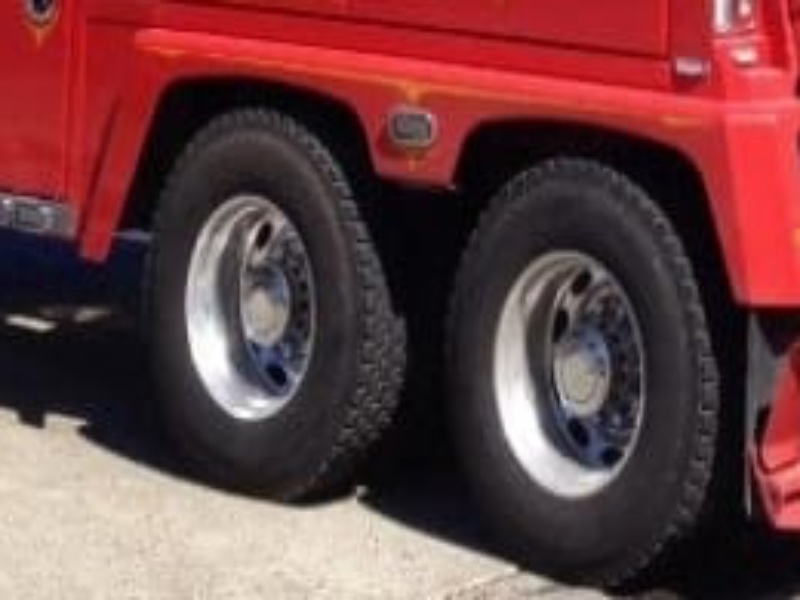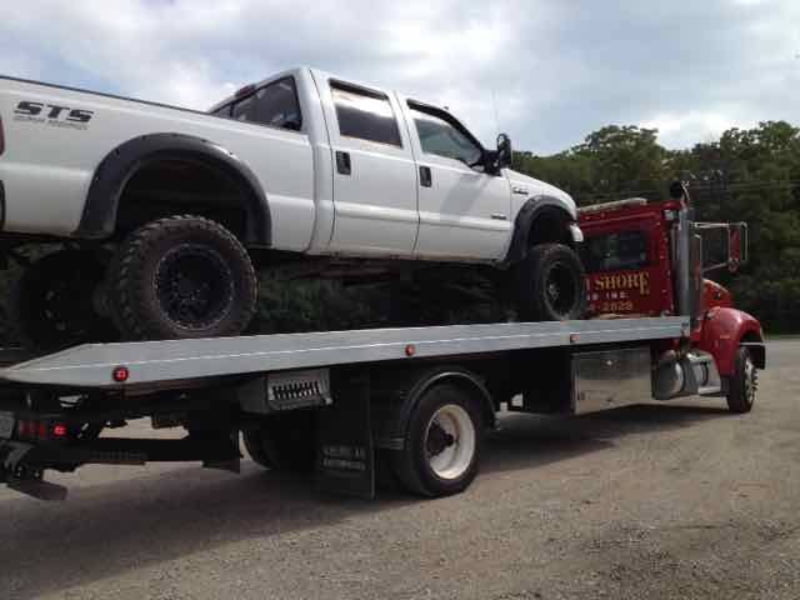It Starts With the Rubber
A tire failure doesn’t wait for your schedule to open up. It hits in traffic. In the rain. On a stretch of I-290 that has no shoulder and nowhere safe to stand. When motorists reach out to us for I-290 roadside assistance, it could be because something that should’ve been simple—something like a worn tire—spiraled into a much bigger mess for the driver an our towing team.

What Healthy Tires Look Like
You don’t need to be a mechanic to spot a bad tire. But you do need to check. These signs mean it’s time for action:
- Low Tread Depth: If it’s under 2/32 of an inch, you’re already at risk of hydroplaning in wet conditions. Use a tread gauge or the edge of a penny to check.
- Inconsistent Tire Pressure: A tire that keeps losing air may have a slow leak, bead damage, or a puncture you can’t see.
- Cracks or Bulges: Sidewall bubbles or dry cracks indicate internal damage or breakdown of the rubber’s structure.
- Uneven Wear: More wear on one edge could mean misalignment or suspension problems, which lead to faster wear and reduced handling.
- Old Rubber: Tires older than six years—even if they look fine—can dry out and fail without warning.
Every one of these issues adds strain on your steering, suspension, and brakes. And every one is a warning sign that the tire may give out when you need it most.
Tire Maintenance Is Simple… Until It’s Not
Some breakdowns could have been avoided with regular checks. You don’t need tools or training to stay ahead of a flat. Just a few minutes each month makes the difference.
Here’s what we recommend:
- Inspect all four tires monthly for wear, bulges, or debris
- Check pressure with a gauge, not just your eyes—especially in extreme heat or cold
- Rotate tires every 5,000 to 8,000 miles to prevent uneven wear
- Replace tires in pairs or sets to maintain balance and traction
- Keep a reliable spare, and make sure it’s inflated properly too
We provide I-290 roadside assistance for tire blowouts that started with issues like these. Drivers often tell us they meant to check their tires but didn’t make the time. The next call they make is to our I-290 roadside assistance team.
Bad tires don’t fail when it’s convenient. They fail when you’re merging. When you’re turning. When the road is wet and you can’t stop fast enough.

North Shore Towing: Our I-290 Roadside Assistance Team Gets You Out of the Breakdown Lane
Our I-290 roadside assistance team has seen drivers overwhelmed, scared, and frustrated after tire failures that could’ve been prevented. Nobody plans to call us. But when it happens, our I-290 roadside assistance team knows what to do. We respond quickly, keep you safe, and get your vehicle where it needs to go.
The side of I-290 isn’t where anyone wants to be. If you’ve never stood there with your hazards on and trucks flying by inches away, take this as a warning. It’s loud, disorienting, and dangerous. Our I-290 roadside assistance crews train for exactly those moments, but the goal is always fewer calls like that in the first place.
If you’re reading this before something goes wrong, that’s your moment. Walk outside. Check your tires. Make sure they’re ready. Because nothing ends a drive faster than a tire that wasn’t.

